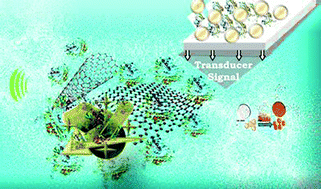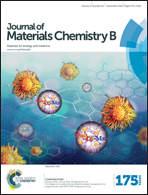Functional nanostructures for enzyme based biosensors: properties, fabrication and applications
Abstract
With the increased use of nanobiotechnology-enabled solutions for diagnostics, therapeutics, bioelectronics, environmental, and energy-related applications, there exists a great demand for developing manufacturing processes that can reliably and reproducibly generate functional nanostructures with bioactive properties at low cost and in large quantities for implementation in practical devices. Interest in the development of field portable monitoring devices has increased throughout the past decade. Herein we describe fabrication, characterization and performance of portable and printable enzyme biosensors based on functional enzyme–nanoparticle conjugates. We review specific physicochemical and surface properties of nanoparticles used as carriers and sensing components for the design of portable biosensors and describe the role of these parameters in enhancing the performance, stability and field operability of these devices. Assembly of enzyme–nanoparticle conjugates is also discussed with an overview of current and emerging techniques enabling large scale roll-to-roll fabrication and miniaturization, including screen-printing, inkjet and 3D printing methods and their integration in flexible, wearable and inexpensive point-of-use devices. Current status and implementation challenges are provided with examples of applications in the clinical, environmental, public safety and food monitoring fields.

- This article is part of the themed collection: JMC B Editor’s choice web collection: ‘‘seeing the unseen updated: advances in biosensing’’

 Please wait while we load your content...
Please wait while we load your content...